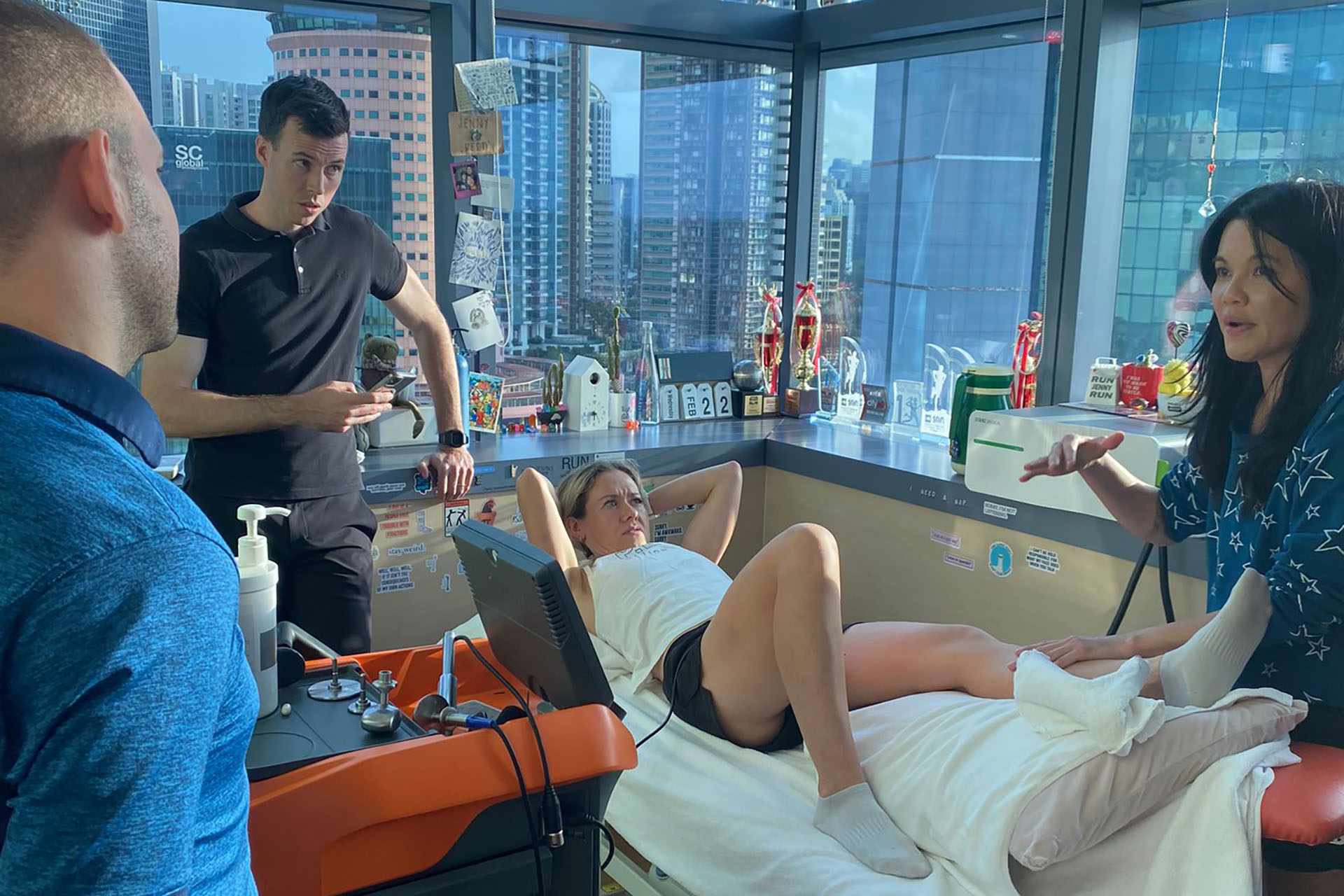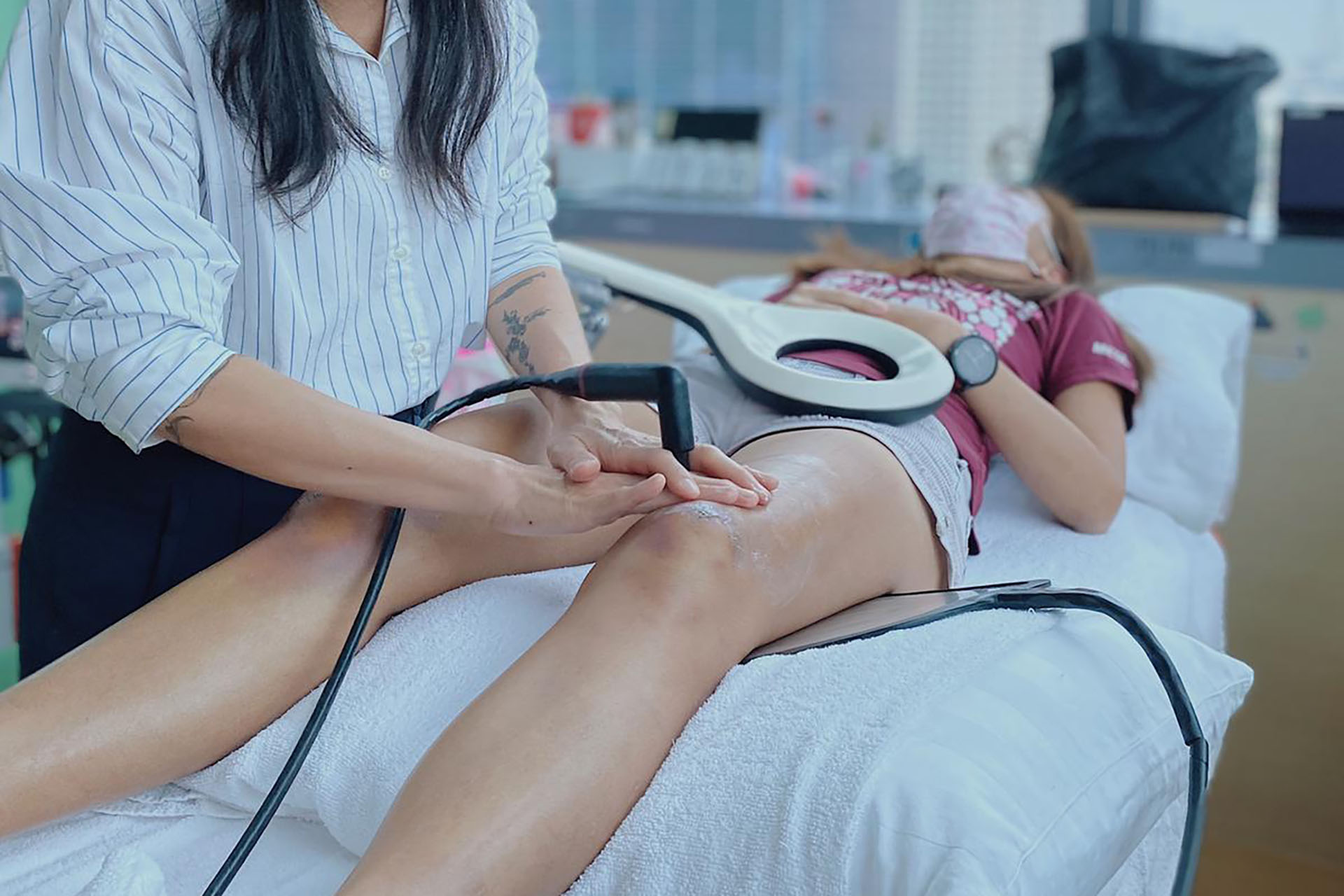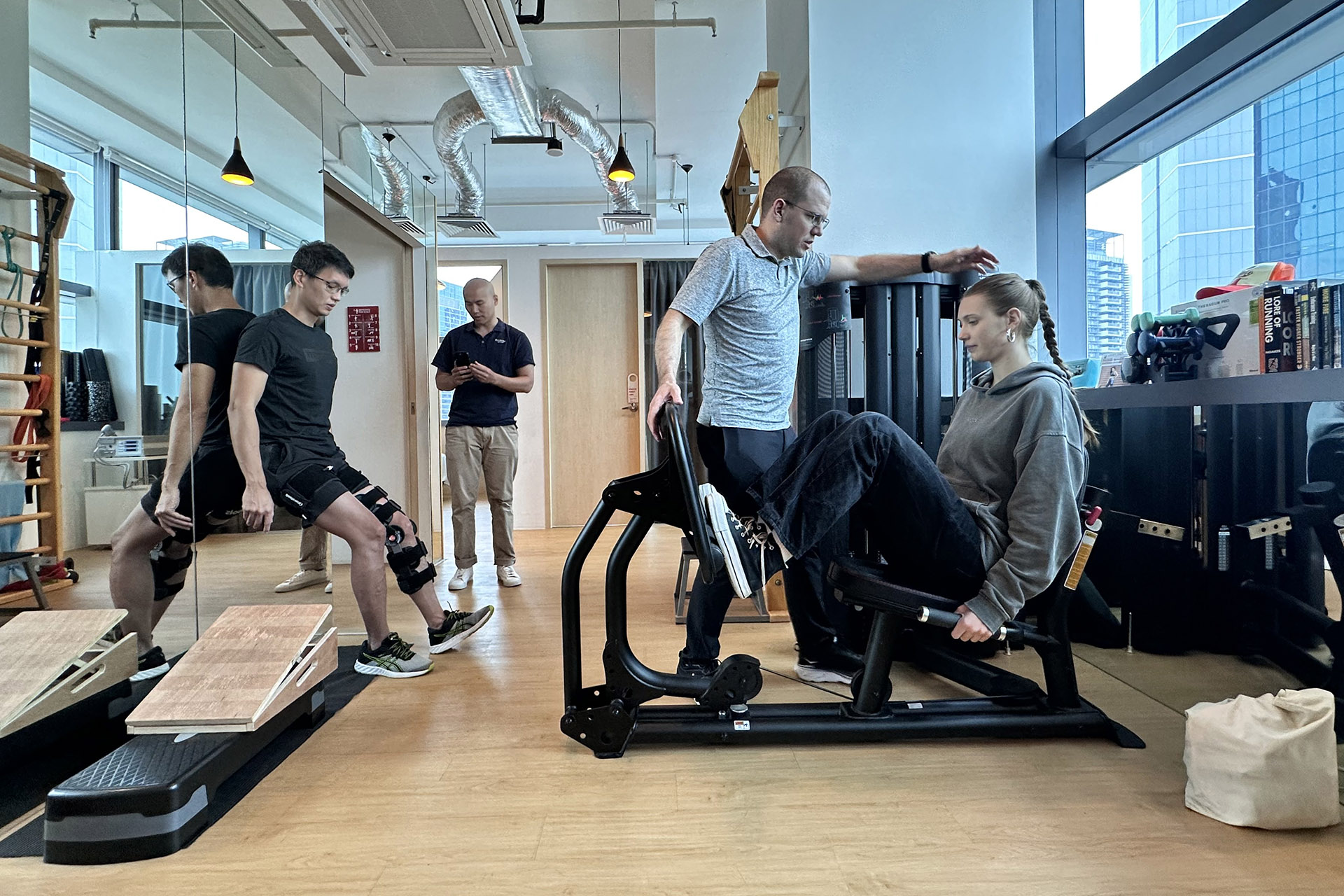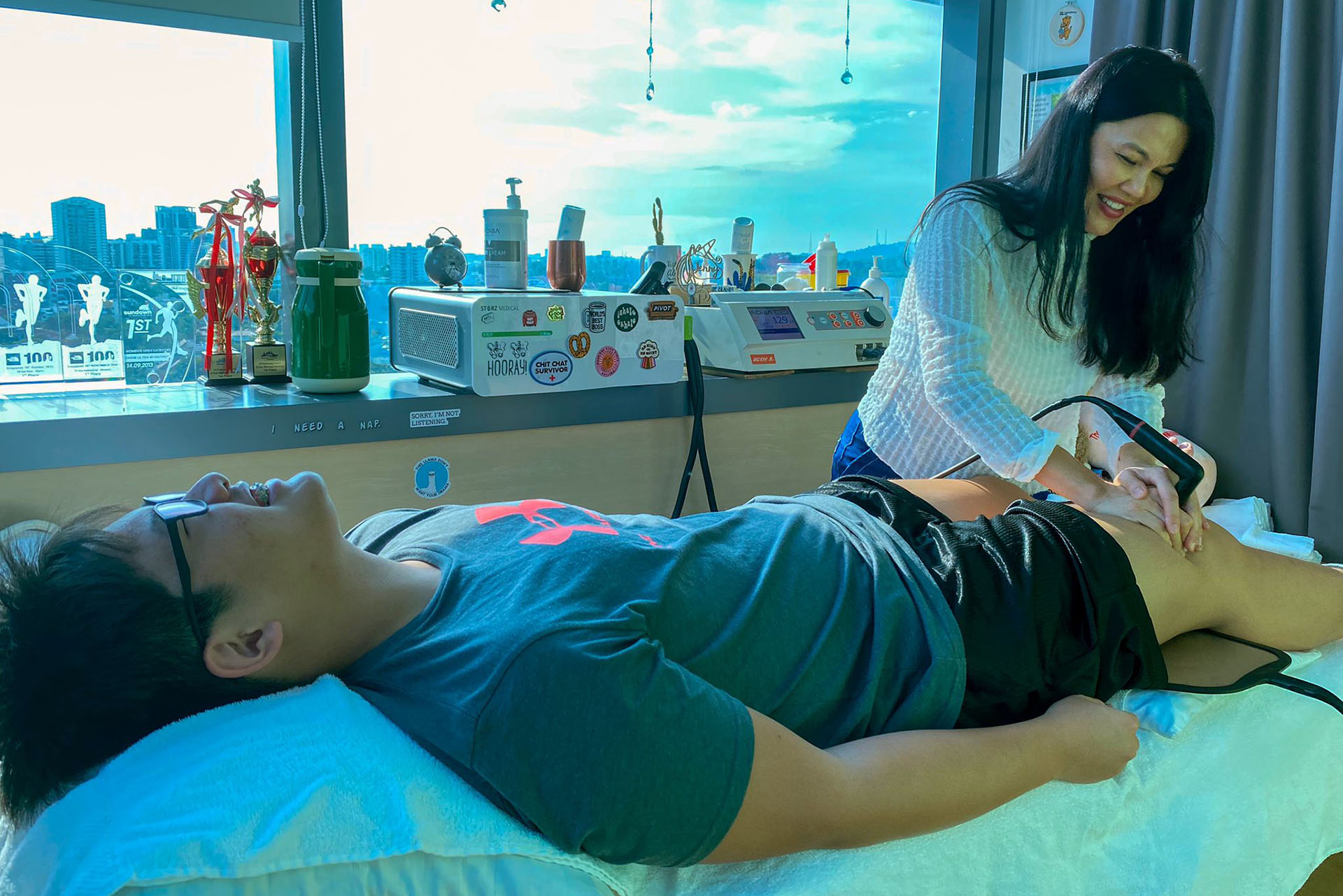Patellofemoral Pain Syndrome (PFPS), often referred to as “runner’s knee,” is a common condition that affects individuals of all ages and activity levels. Despite its nickname, you don’t have to be a runner to experience this frustrating knee pain. PFPS can impact anyone from weekend warriors to office workers, making simple activities like climbing stairs or sitting for extended periods uncomfortable or even painful.
For those currently suffering from Patellofemoral Pain Syndrome, the discomfort and limitations can be frustrating. If you’re experiencing symptoms of PFPS, such as pain around your kneecap that worsens with activities like running, climbing stairs, or sitting for long periods, seeking professional help is essential. It’s crucial to remember that with proper treatment and management, most individuals can return to their desired activities and enjoy an active lifestyle.
A physiotherapist can provide a thorough assessment of your condition and develop a personalized treatment plan to address your specific needs. In the meantime, there are several steps you can take to manage your symptoms. Resting and modifying activities that exacerbate your pain is important, as is applying ice to the affected area to reduce pain and inflammation.

Your physiotherapist may recommend using a patellar brace or taping technique to provide additional support. Maintaining a healthy weight can help reduce stress on your knees, and wearing supportive footwear appropriate for your activities is also beneficial.
Remember, while Patellofemoral Pain Syndrome can be challenging, it’s a manageable condition. With the right combination of physiotherapy treatments, including innovative therapies like INDIBA® Activ and Shockwave Therapy, along with a commitment to your prescribed exercise program, you can overcome PFPS and return to the activities you love. Don’t let knee pain hold you back – reach out to a physiotherapy clinic specializing in knee conditions to start your journey towards better knee health and improved quality of life.
Physiotherapy and Adjunctive Treatments
Physiotherapy plays a crucial role in treating Patellofemoral Pain Syndrome (PFPS). A skilled physiotherapist develops a tailored treatment plan aimed at reducing pain, improving muscle strength and flexibility, correcting biomechanical issues, and educating patients on proper exercise techniques. The treatment typically combines manual therapy techniques with a progressive exercise program to address both symptoms and underlying causes.
Complementary therapies have shown promising results in managing PFPS. INDIBA® Activ, a non-invasive radiofrequency therapy, reduces pain and inflammation while promoting tissue healing by delivering controlled thermal energy to affected tissues. Shockwave Therapy, using high-energy sound waves, is effective for stubborn cases, stimulating healing and improving blood flow.

Sports massage can enhance muscle flexibility and circulation, contributing to faster recovery times. Clinical Pilates, a low-impact exercise form, improves core strength, flexibility, and body awareness, supporting long-term management of PFPS. These complementary therapies, used alongside traditional physiotherapy techniques, offer a comprehensive approach to managing PFPS, addressing both symptoms and underlying factors to improve pain, function, and quality of life.
Understanding Patellofemoral Pain Syndrome
Patellofemoral Pain Syndrome is characterized by pain around or behind the kneecap, particularly where it meets the thigh bone (femur). This pain typically worsens with activities that increase the load on the patellofemoral joint, such as running, jumping, squatting, or even sitting with bent knees for prolonged periods.
The causes of Patellofemoral Pain Syndrome are multifaceted and can vary from person to person.
Common factors contributing to PFPS include:
- Muscle imbalances or weakness, particularly in the quadriceps and hip muscles
- Poor biomechanics or alignment issues in the lower limbs
- Overuse or sudden increases in physical activity
- Trauma to the knee area
- Anatomical factors, such as a high-riding patella or flat feet
Symptoms of Patellofemoral Pain Syndrome
Recognizing the symptoms of PFPS is crucial for early intervention and effective treatment.
Common symptoms include:
- Dull, aching pain around or behind the kneecap
- Pain that worsens with activities like running, jumping, or climbing stairs
- Discomfort when sitting with bent knees for extended periods (sometimes called “movie-goer’s knee”)
- A feeling of stiffness or tightness in the knee area, especially after periods of inactivity
- Occasional clicking or popping sensations in the knee
It’s important to note that while these symptoms are characteristic of PFPS, they can also be indicative of other knee conditions. A proper diagnosis from a healthcare professional is essential for appropriate treatment.
Recovery Time and Long-Term Management
One of the most common questions patients ask about Patellofemoral Pain Syndrome is, “How long will it take to recover?” The truth is, recovery time can vary significantly from person to person, depending on factors such as the severity of the condition, adherence to treatment plans, and individual healing rates. While some individuals may experience significant improvements within a few weeks of starting physiotherapy, others may require several months of consistent treatment and exercise to achieve optimal results.
It’s important to approach the recovery process with patience and persistence. Your physiotherapist will work with you to set realistic goals and timelines, adjusting your treatment plan as needed based on your progress. Many patients find that even as their pain improves, continuing with a maintenance program of exercises and periodic physiotherapy sessions can help prevent future flare-ups and maintain long-term knee health.

For those currently suffering from Patellofemoral Pain Syndrome (PFPS), the pain and limitations can be frustrating. It’s important to remember that with proper treatment and management, most individuals can return to their desired activities and enjoy an active lifestyle.
If you’re experiencing symptoms of PFPS, such as pain around your kneecap that worsens with activities like running, climbing stairs, or sitting for long periods, it’s crucial to seek professional help. A physiotherapist can thoroughly assess your condition and develop a personalized treatment plan to address your specific needs. Don’t let knee pain hold you back. Reach out to our senior physiotherapists at HelloPhysio, who specialize in knee conditions, to start your journey toward better knee health and improved quality of life.

